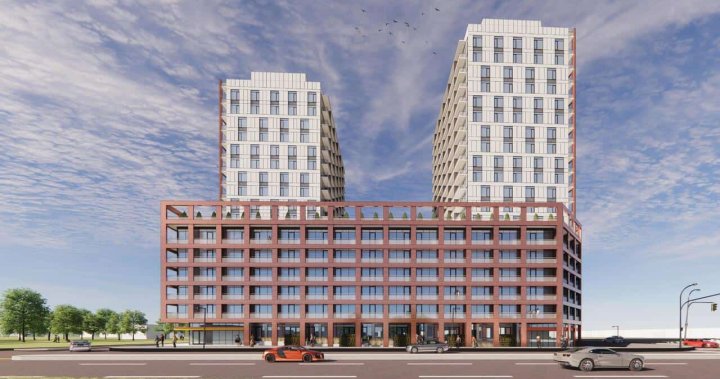A proposed two-tower residential complex in Stoney Creek, Ontario, across from a Hamilton museum and park, has hit a roadblock as the province rejected an appeal to change zoning permissions. The Ontario Land Tribunal ruled that the 18 and 20-storey development, which would have brought 564 housing units to the area near Battlefield Park around King Street East and Centennial Parkway, represented over-intensification of the area. The OLT suggested that the property was located in an area that is not suitable for the high intensification proposed and would overwhelm the neighbourhood. The project developers, Camaro Group, had sought to re-designate the parcel from a lower density classification to a mixed-use medium density ranking to allow for a maximum of 969 units per hectare.
The proposed development was to include two housing towers, a commercial space on the ground floor, and underground parking. The area around the proposed site is mostly surrounded by Battlefield Park to the east, vacant lands to the south, and a municipal cemetery to the west. During a hearing in late January, lawyers for the appellant argued that the development aligned with the city’s initiatives to accommodate future population growth through infill and intensification. However, Ward 5 Coun. Matt Francis opposed the project, suggesting that a more realistic number for the area would be around eight storeys with between 100 and 200 units per hectare. He emphasized the importance of mindful development, especially when placing high-rise buildings near historic sites such as a park and cemetery.
The OLT’s decision to reject the appeal indicates that the proposed development did not align with the zoning regulations in place for the area. The ruling suggested that the density of the development was not suitable for the location and would have a negative impact on the neighbourhood. While the developers argued that the project would not have adverse impacts, local officials and residents raised concerns about the scale of the development and its compatibility with the surrounding historical and natural landmarks. Coun. Matt Francis highlighted the need for development to be in line with the city’s overall vision, especially in areas designated for preservation and historical significance.
The rejection of the appeal means that the developers will likely have to revise their plans for the residential complex in Stoney Creek. Going back to the drawing board, they will need to come up with a new proposal that better aligns with the zoning regulations and the concerns raised by the OLT and local officials. This setback highlights the importance of careful planning and consultation when it comes to large-scale developments in sensitive areas such as those near historic sites and parks. Moving forward, it will be essential for developers to consider the feedback from the OLT and the local community to ensure that any future proposals are in line with the city’s growth goals while preserving the character of the neighbourhood and its surroundings.
The ruling by the Ontario Land Tribunal serves as a reminder of the importance of responsible development practices that take into account the unique characteristics and heritage of an area. While intensification and growth are necessary for urban areas, it is crucial to strike a balance between progress and preservation. The rejection of the appeal for the two-tower residential complex in Stoney Creek underscores the need for developers to engage with local authorities and stakeholders early in the planning process to address any concerns and ensure that proposed developments are in harmony with the surrounding environment. By respecting the history and character of a neighbourhood, developers can create projects that contribute to the community while enhancing the quality of life for residents.


